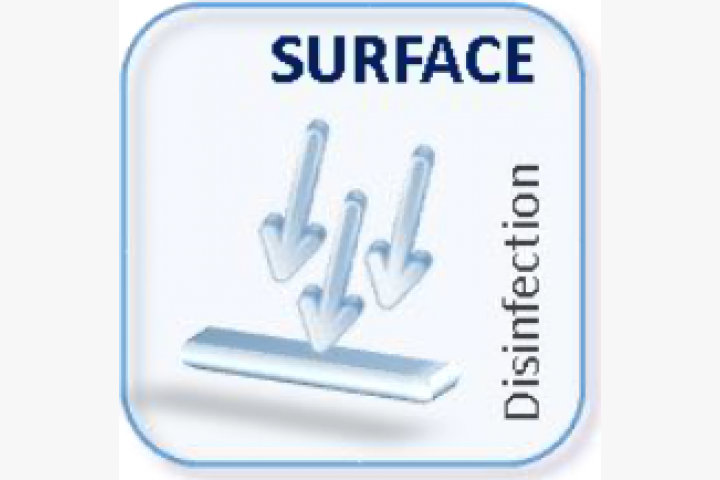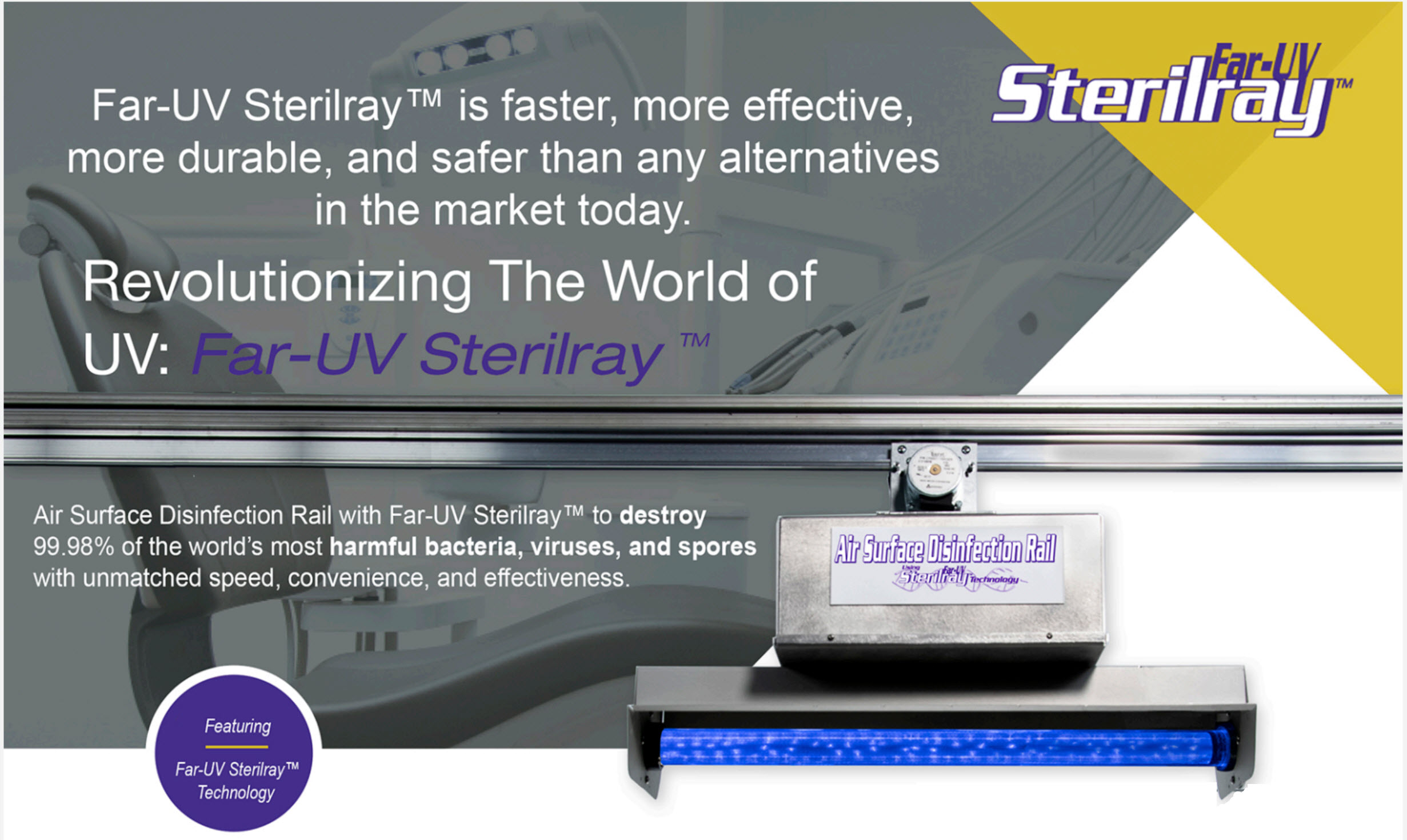Utilizing the Power of UV Surface Disinfection: A Comprehensive Guide for Healthier Spaces
Utilizing the Power of UV Surface Disinfection: A Comprehensive Guide for Healthier Spaces
Blog Article
UV Sanitation: The Cutting-Edge Technology Transforming Hygiene Practices
In the realm of sanitation practices, one modern technology has actually arised as a game-changer: UV sanitation. From health care settings to food handling, UV disinfection is making its mark in various industries.
Exactly How UV Sanitation Works
UV sanitation functions by using ultraviolet light to ruin or inactivate microbes, supplying a highly efficient and chemical-free method of hygiene. This technology uses the power of short-wavelength UV-C light, which is capable of harming the DNA and RNA of bacteria, therefore making them not able to trigger and recreate harm.
The process begins with the installation of UV disinfection systems, which contain UV lights that discharge UV-C light. These lights are strategically positioned in areas where microbial contamination is a worry, such as water therapy plants, healthcare facilities, labs, and food processing facilities.
When microorganisms are subjected to UV-C light, the photons penetrate their cell wall surfaces and reach the DNA and RNA within. The high-energy UV-C photons interfere with the hereditary material by producing bonds in between adjacent nucleotides, resulting in the development of thymine dimers. These dimers protect against the microbes from duplicating, providing them safe.
UV sanitation is extremely efficient versus a large range of microorganisms, including viruses, parasites, and germs. It is specifically reliable versus waterborne pathogens like E. coli, Giardia, and Cryptosporidium. Additionally, UV disinfection is a chemical-free technique, removing the requirement for potentially harmful disinfectants and minimizing the threat of dangerous sanitation by-products.
Advantages of UV Sanitation
UV disinfection provides numerous advantages in the field of sanitation, making it a highly preferred technique for properly eliminating dangerous microbes. Unlike conventional disinfection approaches that rely on chemicals, UV disinfection makes use of ultraviolet light to ruin the DNA of bacteria, providing them incapable to recreate and trigger infections.

UV sanitation is also highly flexible in its applications. It can be made use of in numerous settings, including medical facilities, schools, food handling facilities, and water treatment plants. UV disinfection systems can be conveniently incorporated right into existing cleanliness methods, providing an added layer of defense against contagious conditions.
In addition to its performance and versatility, UV disinfection is additionally ecologically pleasant. It does not produce any damaging results or residues, making it a risk-free and lasting technique for hygiene - uv surface disinfection. UV sanitation calls for marginal maintenance and has a long life-span, resulting in price savings in the lengthy run.
UV Sanitation in Healthcare Settings
In medical care setups, UV sanitation has actually arised as a cutting-edge approach for efficiently removing dangerous microorganisms. UV sanitation functions by emitting ultraviolet light at a specific wavelength that is lethal to microorganisms, viruses, and various other microorganisms.
First of all, UV sanitation is a non-chemical technique, making it an eco-friendly option contrasted to standard disinfection methods that usually involve making use of rough chemicals. Making use of UV light gets rid of the demand for chemical anti-bacterials, decreasing the threat of damaging residue or chemical direct exposure to both people and medical care workers.
In addition, UV sanitation is extremely effective in eliminating a variety of microorganisms, including drug-resistant germs such as MRSA and C. difficile. It supplies a regular and trusted sanitation process, guaranteeing that all surface areas and equipment are extensively sanitized, even in hard-to-reach locations.

UV Disinfection in Food Handling
The application of UV sanitation prolongs beyond health care setups and finds considerable value in the realm of food processing. uv surface disinfection. UV disinfection innovation is becoming progressively prominent in the food market because of its capability to successfully remove dangerous pathogens and improve food security
Among the major benefits of UV sanitation in food processing is its ability to target a broad array of bacteria, including infections, mold and mildews, and microorganisms. By using UV light at details wavelengths, it is possible to disrupt the DNA and RNA of these virus, rendering them not able to trigger or duplicate injury. This innovation can be related to various stages of the food processing chain, consisting of surface area sanitation, devices sterilization, and water treatment.
UV disinfection supplies a chemical-free and non-thermal method of disinfecting food. Unlike traditional disinfection techniques that rely upon chemicals or warmth, UV technology does not leave any kind of deposit or change the taste, texture, or nutritional value of the food. This makes it an excellent option for markets that require stringent adherence to high quality criteria.
Additionally, UV disinfection systems are simple to set up and operate, requiring minimal maintenance. They can be integrated into existing handling lines without creating substantial interruptions to the manufacturing process. Additionally, UV systems have a fast therapy time, enabling continuous processing and decreasing downtime.
The Future of UV Disinfection

One area where UV disinfection is anticipated to make significant developments remains in the area of healthcare. With the rise of antibiotic-resistant microorganisms and the requirement for much more effective sanitation approaches, UV light has the possible to play an important duty in minimizing healthcare-associated infections. UV disinfection systems can be used to decontaminate surfaces, equipment, and even the air in medical care facilities, aiding to protect against the spread of hazardous pathogens and enhance client security.
One more industry that could benefit from improvements in UV disinfection technology is the food sector. UV light has actually already confirmed to be a reliable technique for sanitizing food and minimizing the danger of foodborne ailments. As innovation improves, we can expect to see a lot more affordable and effective UV sanitation systems being implemented in food processing plants, ensuring that the food we consume is secure and without unsafe bacteria.
Verdict
In verdict, UV sanitation is a sophisticated technology that is changing sanitation practices in medical care setups and food processing. By using UV light to kill or shut off microbes, it uses countless benefits such as efficiency, efficiency, and safety. With recurring advancements in this area, UV sanitation holds excellent potential for the future of hygiene, giving a reliable and sustainable remedy for keeping tidy and sanitary atmospheres.
UV disinfection is a chemical-free approach, eliminating the need for potentially damaging disinfectants and minimizing the threat of damaging disinfection by-products.
Unlike conventional sanitation methods that depend on chemicals, UV disinfection utilizes ultraviolet light to destroy the DNA of microbes, rendering them unable to duplicate and trigger infections. Unlike traditional sanitation methods that rely on chemicals or warmth, UV modern technology does not leave any residue or alter the preference, texture, or dietary value of the food. As modern technology enhances, we can anticipate to see a lot more economical and reliable UV sanitation systems being executed in food handling their website plants, making sure that the food we consume is safe and cost-free from damaging germs.
In verdict, UV sanitation is a sophisticated go to this website modern technology that is changing cleanliness practices in medical care setups and food handling.
Report this page